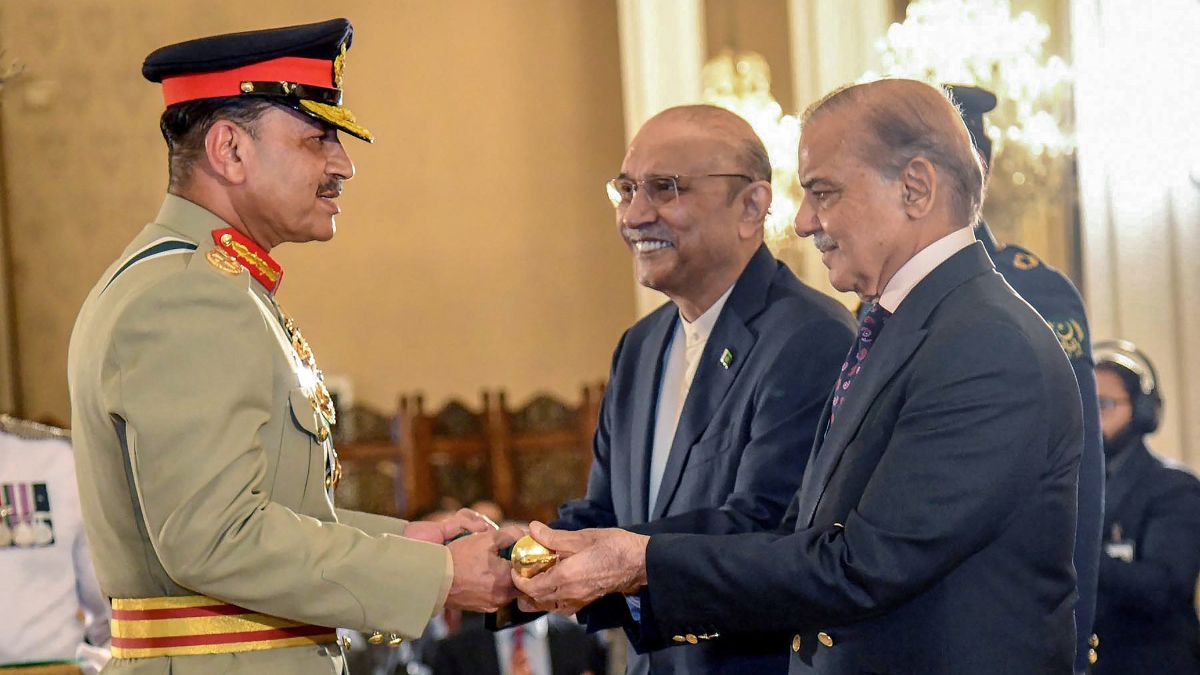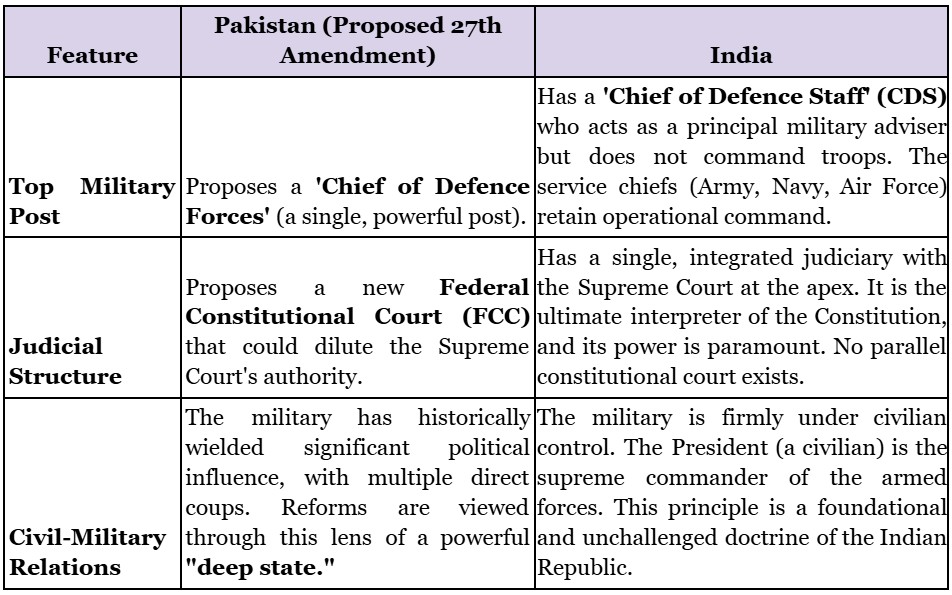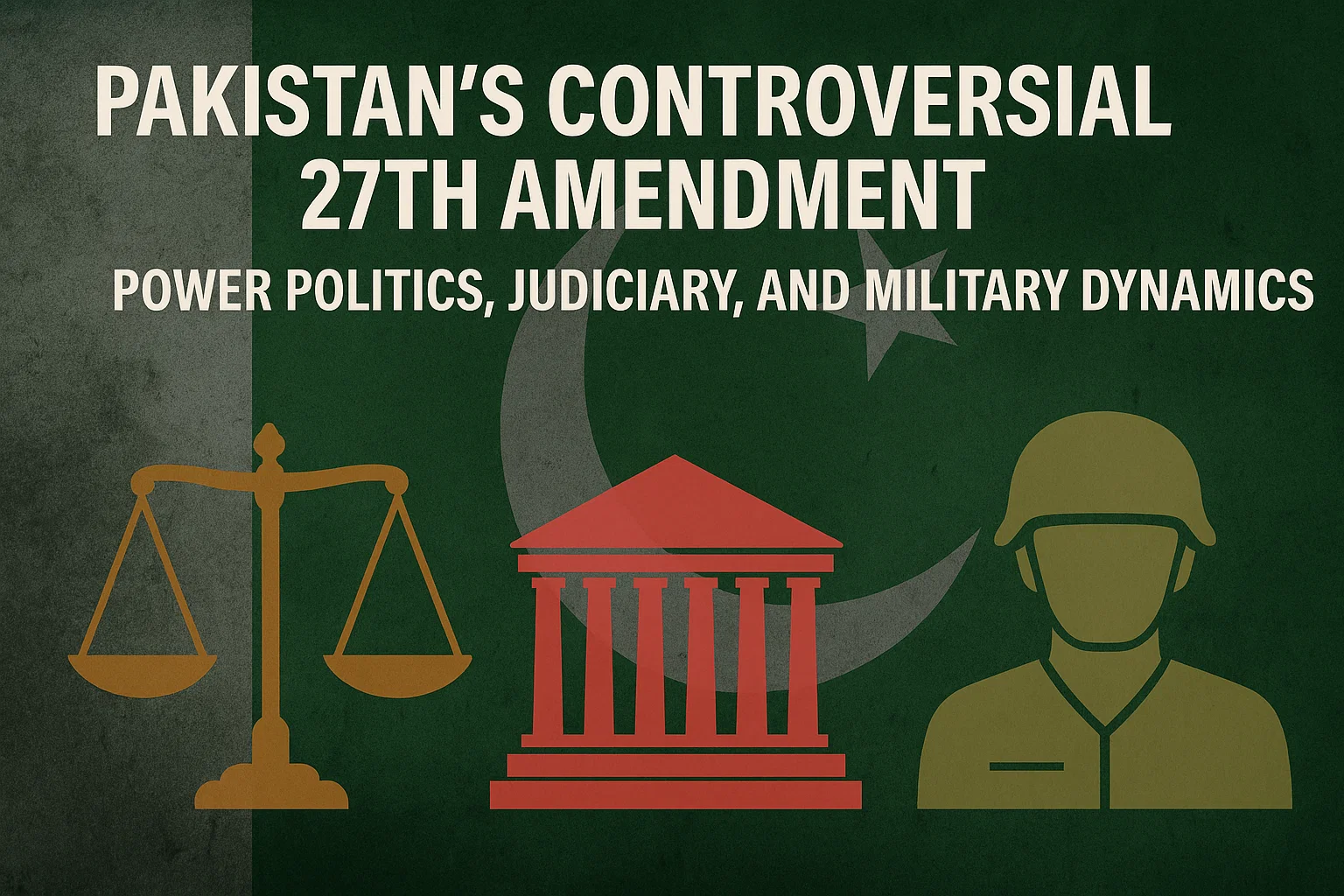Pakistan’s Controversial 27th Amendment: Power Politics, Judiciary, and Military Dynamics
Learn why Pakistan’s 27th Constitutional Amendment has sparked nationwide controversy. Explore how it could weaken the judiciary, centralise military command, and reshape Pakistan’s political power balance, contrasting it with India’s democratic framework.
Pakistan’s Controversial 27th Amendment: Constitutional Crisis and Civil-Military Power Shift
A joint parliamentary committee in Pakistan has approved the draft of the 27th Constitutional Amendment Bill, triggering intense national debate. The amendment has been described as one of the most contentious in Pakistan’s recent constitutional history, touching upon issues of judicial independence, civil-military balance, and executive authority.
)
Why is this Amendment Controversial?
The 27th Amendment has sparked widespread controversy for its far-reaching implications on Pakistan’s institutional structure and democratic checks and balances.
1. Perceived Weakening of the Judiciary
The most disputed provision concerns the establishment of a new Federal Constitutional Court (FCC), which would handle constitutional matters currently under the jurisdiction of the Supreme Court of Pakistan.
Opposition leaders, legal experts, and civil society groups view this as an attempt to dilute the Supreme Court’s authority, effectively creating a parallel judicial body that could be influenced by the executive. Critics argue that this change undermines the independence of the judiciary — one of the three key pillars of democracy — and may reduce judicial oversight over legislative and executive excesses.
2. Centralisation of Military Command
Another controversial proposal is the replacement of the ‘Chairman, Joint Chiefs of Staff Committee’ with a newly created position — the ‘Chief of Defence Forces’.
While proponents argue this will streamline command structures and improve coordination between the Army, Navy, and Air Force, critics view it as a move that could further centralise military authority.
Given Pakistan’s long history of military interventions and coups, many fear this change may institutionalise military dominance rather than strengthen civilian oversight.
3. Political Motives and Lack of Consensus
The passage of the draft amid opposition walkouts and protests has raised concerns about transparency and democratic consensus. The Opposition claims the government aims to shield itself from judicial scrutiny, curb dissent, and consolidate power.
The lack of cross-party consultation and hurried approval by the committee have amplified suspicions of partisan motives, framing the amendment as a politically driven power grab rather than a structural reform.
How is it Different from India?
The proposed 27th Amendment underscores sharp contrasts between Pakistan’s constitutional structure and India’s democratic framework, particularly in the realms of civil-military relations and judicial independence.

Why It Matters Geopolitically
The 27th Amendment comes at a time of political instability and economic distress in Pakistan. Analysts warn that curbing judicial autonomy and empowering the military could further weaken democratic institutions, strain relations between branches of government, and erode public trust.
For regional observers, these developments highlight the contrast between India’s stable constitutional democracy and Pakistan’s ongoing struggle with institutional balance and democratic consolidation.
Conclusion
Pakistan’s 27th Constitutional Amendment represents more than a technical legal reform — it is a reflection of the continuing tug-of-war between civilian authority, judicial independence, and military influence.
While the government defends it as a step toward efficiency, critics argue it risks undermining democratic norms and constitutional integrity. The coming months will determine whether this amendment strengthens or further destabilises Pakistan’s fragile democratic framework.
Subscribe to our Youtube Channel for more Valuable Content – TheStudyias
Download the App to Subscribe to our Courses – Thestudyias
The Source’s Authority and Ownership of the Article is Claimed By THE STUDY IAS BY MANIKANT SINGH



